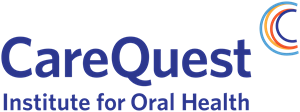From Becker’s Hospital Review
In the past five years, over 100 rural hospitals have stopped delivering babies, contributing to the 57% of rural U.S. hospitals that lack labor and delivery services.
This finding comes from the Center for Healthcare Quality and Payment Reform. Its July report details the number of rural hospitals by state that lack maternity care services, those that do offer such services, the financial losses incurred from maternity care and the travel time to the nearest hospital providing OB services.
“Over 80% of pregnancy-related deaths are preventable with appropriate prenatal, labor & delivery, and post-partum care,” the CHQPR report notes. “Although improvements in maternity care are needed in all parts of the country to reduce mortality rates, one of the greatest challenges is in rural areas, because most rural hospitals are no longer providing maternity care at all.”
Of the 978 rural hospitals that offer labor & delivery services, almost 40% lost money on patient services overall in 2022 through 2023, meaning their ability to continue delivering maternity care is at risk.
Below are the 19 states with the highest percentage of rural hospitals lacking OB or maternity care. In each of these states, the percentage of rural hospitals without OB care exceeds the U.S. average of 57%. There are ties below, resulting in 19 states with 12 rankings for the greatest proportion of hospitals without OB care.
Readers can find CHQPR’s report on maternity care deserts among rural hospitals in full here.
1. Florida
Total rural hospitals: 22
Number without OB services: 20
Percentage without OB services: 91%
2. North Dakota
Total rural hospitals: 39
Number without OB services: 31
Percentage without OB services: 79%
3. Louisiana
Total rural hospitals: 56
Number without OB services: 42
Percentage without OB services: 75%
4. Illinois
Total rural hospitals: 74
Number without OB services: 55
Percentage without OB services: 74%
West Virginia
Total rural hospitals: 31
Number without OB services: 23
Percentage without OB services: 74%
5. Nevada
Total rural hospitals: 14
Number without OB services: 10
Percentage without OB services: 71%
6. Virginia
Total rural hospitals: 30
Number without OB services: 21
Percentage without OB services: 70%
7. Alabama
Total rural hospitals: 52
Number without OB services: 36
Percentage without OB services: 69%
Oklahoma
Total rural hospitals: 81
Number without OB services: 56
Percentage without OB services: 69%
8. Mississippi
Total rural hospitals: 72
Number without OB services: 49
Percentage without OB services: 68%
9. Arkansas
Total rural hospitals: 50
Number without OB services: 32
Percentage without OB services: 64%
Georgia
Total rural hospitals: 72
Number without OB services: 46
Percentage without OB services: 64%
Montana
Total rural hospitals: 55
Number without OB services: 35
Percentage without OB services: 64%
10. South Dakota
Total rural hospitals: 49
Number without OB services: 31
Percentage without OB services: 63%
Pennsylvania
Total rural hospitals: 43
Number without OB services: 27
Percentage without OB services: 63%
11. Iowa
Total rural hospitals: 94
Number without OB services: 58
Percentage without OB services: 62%
12. Texas
Total rural hospitals: 164
Number without OB services: 97
Percentage without OB services: 59%
Kansas
Total rural hospitals: 100
Number without OB services: 59
Percentage without OB services: 59%
California
Total rural hospitals: 58
Number without OB services: 34
Percentage without OB services: 59%


 Children and adults with a trauma history are more likely to have poor oral health and increased dental care-related fear and anxiety.
Children and adults with a trauma history are more likely to have poor oral health and increased dental care-related fear and anxiety.